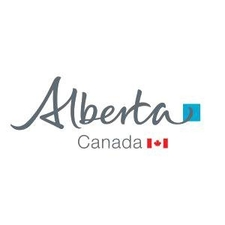NORTH-SASKATCHEWAN-RIVER
Type of resources
Topics
Keywords
Contact for the resource
Provided by
Formats
Representation types
Update frequencies
status
-

The Riparian Area Assessment of the North Saskatchewan and Battle River Watersheds project focused on assessing riparian habitat along lake, creek, stream and river shorelines. The majority of the shorelines of interest were located within the NSR or Battle River watersheds. however, an additional shoreline was also assessed within municipalities that partially intersect, but are not completely contained within, either the NSR or Battle River watersheds. In addition to assessing new shorelines, an important component of this project was compiling data for shorelines that had been previously assessed in central Alberta using the same assessment methodology. these data were combined together to create a single, seamless riparian assessment dataset that contains ~35,400 km of lake, river, stream, and creek shoreline. This dataset was created for the North Saskatchewan and Battle River Watershed Planning and Advisory Councils, as a part of a large scale Riparian Area Assessment in Alberta.
-

This 5 class 6 m resolution land cover was created for the NSWA and BRWA in 2020-2021 using SPOT6/7 imagery from 2017 and 2018 provided by the Government of Alberta in order to assess riparian intactness for 25,272 km of shoreline in Alberta. The land cover was developed from 44 separate supervised random forest classifications of 41 different SPOT6 6m imagery tiles from 2017/2018 and was then clipped to a 50 m buffer around waterbodies of interest. The full classification is composed of 41 individual polygon files, each of which corresponds to the original SPOT tile that the classification was performed on. Details on the individual SPOT tiles is available in the accompanying report. Two data products are available from this project: Wall to Wall Land Cover (available in TIFF and FGDB formats) and Shoreline Buffer (available in TIFF format). Please see the Distribution Information to obtain the data products.
-

These data points are sites visited by Dr. Jozsef Toth during his 1964 to 1969 fieldwork. Dr. Toth is a distinguished hydrogeologist who developed and published his landmark 'Unit Basin' theory of steady state flow leading to the fundamental concept in hydrogeology known as 'Tothian flow system theory'. His contributions to hydrogeology turned the Research Council of Alberta, and subsequently the University of Alberta, into internationally renowned institutions for hydrogeological research. All datapoints relate to the sites in Alberta Geological Survey report INF 143. Field parameters (Temperature, Electrical Conductivity, and Flow Volumes) measured or estimated were retained as attributes to the point data. The data are in ESRI shapefile format.
-

This GIS dataset covers the four types of decontamination zones for whirling disease in Alberta, and identifies the inherent risk categories for each. These boundaries are to be used by Government of Alberta field staff and industry, as described in the Alberta Decontamination Protocol for Watercraft & Equipment. (1) Confirmed Red Zones are zones with CFIA confirmed positive testing for whirling disease and are based on a 'HUC 10' level as found in the Hydrologic Unit Coded Watersheds of Alberta dataset. Irrigation Red Zones are similar to confirmed red zones, however are based on Irrigation District boundaries and only apply to irrigation canals. (2) Yellow Zones represent high to moderate risk for the introduction/spread of whirling disease due to one or more of the following criteria: susceptible salmonid species present, high recreational activity/use and access to water, and high population base. (3) White Zonesdo not have any confirmed cases of whirling disease and represent lower risk due to lower population base and less activity/use.
 Arctic SDI catalogue
Arctic SDI catalogue